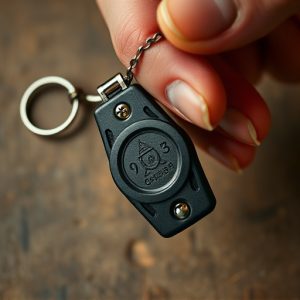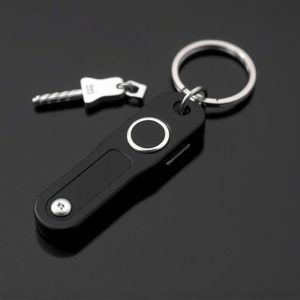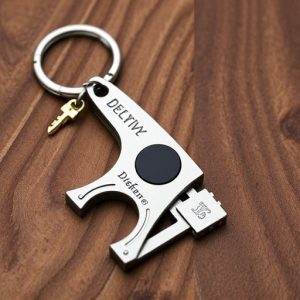Legal Carry: Mastering Protective Keyring Devices for Self-Defense
Protective keyring devices, legal in some US states with liberal self-defense laws, offer citizens a…….
Protective keyring devices, legal in some US states with liberal self-defense laws, offer citizens a discrete way to enhance personal security. Effectiveness hinges on mastering the Proper Keychain Striking Form Technique, which involves specific grip, hand positioning, and swift, directed strikes practiced regularly. When choosing a legal carry device, consider build quality, durable materials, impact resistance, customizable grips, and positive user reviews for safety and reliability.
“Uncover the power of self-defense at your fingertips with protective keyring devices. This comprehensive guide explores the legal landscape surrounding these compact tools, focusing on states where open carry is permitted. We delve into the intricacies of ‘Understanding Protective Keyring Devices: A Legal Perspective,’ highlighting key regulations and rights.
Learn about the states that embrace liberal laws for self-defense tools, and discover the art of mastering the proper keychain striking form technique to ensure effectiveness in unexpected situations.”
- Understanding Protective Keyring Devices: A Legal Perspective
- States with Liberal Laws for Self-Defense Tools
- The Right Techniques for Effective Use
- Choosing the Best Keychain Striking Device: Factors to Consider
Understanding Protective Keyring Devices: A Legal Perspective
Protective keyring devices, often designed with a striking form and technique, have gained popularity as a means of self-defense for individuals facing potential threats. From compact and discretely attached keychains to more robust defensive tools, these devices offer a sense of security in various settings. Legally, the carry of such protective gear is subject to regional regulations, with some states permitting their use for personal safety while others have stringent restrictions.
Understanding the legal framework surrounding these devices requires a deep dive into local laws and ordinances. The concept of reasonable self-defense varies across jurisdictions, influencing whether and under what circumstances carrying a protective keyring device is permissible. Factors such as the nature of the threat, the potential harm, and the level of force employed play a significant role in legal interpretations. As a result, individuals seeking to legally carry such devices must familiarize themselves with their state’s specific regulations, ensuring compliance with the proper keychain striking form technique and adhering to any restrictions placed on self-defense tools.
States with Liberal Laws for Self-Defense Tools
In the United States, certain states have adopted liberal laws regarding self-defense tools, allowing citizens to carry devices designed for personal protection, including protective keyring devices. These states recognize the importance of empowering individuals to defend themselves in various situations. One such device gaining popularity is the proper keychain striking form technique—a compact and discrete tool that can be easily carried on a key chain.
States with liberal self-defense laws often prioritize individual freedom and safety, enabling people to take proactive measures for their security. As a result, citizens in these states can legally carry protective keyring devices, which are designed to incapacitate an assailant through simple striking techniques. This accessibility encourages individuals to be prepared and confident in their ability to defend themselves, fostering a sense of personal security in both urban and rural areas.
The Right Techniques for Effective Use
The effectiveness of a protective keyring device relies heavily on mastering the Proper Keychain Striking Form Technique. It’s not just about carrying a self-defense tool, but knowing how to use it with precision and force. The right technique involves a firm grip, correct hand positioning, and a swift, directed strike. Practice this motion regularly to ensure your keyring device can be deployed quickly in an emergency.
Focus on developing the striking form until it becomes second nature. This means training yourself to deliver powerful, controlled hits without compromising balance or stability. Remember, the goal is not just to have a tool, but to become proficient in using it for self-defense purposes. By honing your skills with the proper keychain striking technique, you maximize its potential as a protective device in legal carry states.
Choosing the Best Keychain Striking Device: Factors to Consider
When selecting a protective keyring striking device for legal carry, several factors come into play to ensure you choose the best option. One of the primary considerations is understanding the proper keychain striking form technique. This involves learning and mastering the correct grip, stance, and swing motion to deliver a powerful yet controlled strike. The goal is to target specific areas on an assailant’s body while minimizing damage to yourself or bystanders.
Additionally, consider the device’s build quality, materials used, and durability. A well-crafted keyring striking tool should be robust enough to withstand frequent use without compromising its effectiveness. Some models offer features like impact-resistant bodies, sharp edges designed for maximum penetration, and customizable grip options for a personalized fit. Always opt for a device that adheres to relevant safety standards and receives positive user reviews to guarantee both its functionality and reliability in real-world scenarios.
Protective keyring devices, when used with the right techniques, can be a reliable self-defense tool. States with liberal laws regarding personal defense equipment make it easier for citizens to carry these devices legally. Choosing the best keychain striking device involves considering factors like material quality, ease of use, and legal permissibility. Mastering the proper keychain striking form technique ensures effectiveness in an emergency. By understanding these aspects, individuals can select and employ a protective keyring device confidently, enhancing their personal safety.


